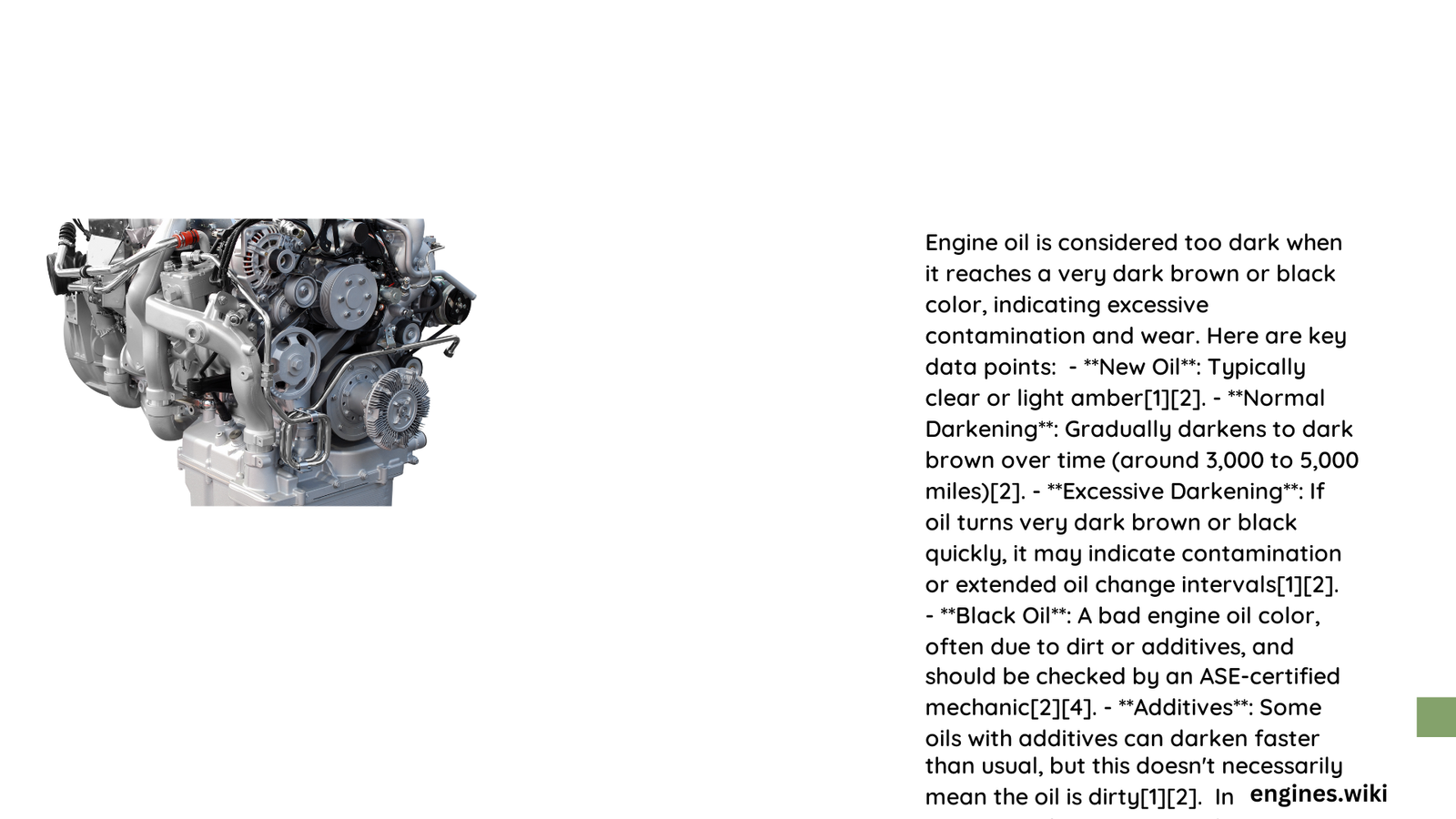Engine oil color serves as a critical diagnostic tool for vehicle maintenance, revealing potential issues with lubrication, contamination, and overall engine health. While oil naturally darkens during use, understanding the nuanced color spectrum can help prevent costly engine damage and ensure optimal performance. This comprehensive guide explores the intricate relationship between oil color, engine conditions, and maintenance requirements.
What Determines Engine Oil Color?
Engine oil color is influenced by multiple factors that reflect its condition and the engine’s internal environment. The transformation from pristine amber to deep black isn’t just cosmetic—it’s a complex narrative of mechanical interactions.
Key Color Progression Indicators
| Oil Color | Condition | Recommended Action |
|---|---|---|
| Amber/Golden | Fresh, Clean Oil | No Immediate Action |
| Light Brown | Moderate Use | Monitor Regularly |
| Dark Brown | Approaching Limit | Consider Inspection |
| Black | Potential Contamination | Immediate Oil Change |
Why Does Engine Oil Turn Dark?

Several critical mechanisms contribute to oil darkening:
- Combustion Byproducts
- Soot generation from fuel combustion
- Carbon particle accumulation
-
Blow-by gases entering oil system
-
Thermal Degradation
- High-temperature engine operations
- Chemical breakdown of oil additives
-
Oxidation of lubricant components
-
Contamination Sources
- Microscopic metal particles
- Dust and environmental debris
- Combustion chamber residues
How to Assess Oil Darkness Accurately?
Visual Inspection Techniques
- Dipstick Method
- Clean dipstick thoroughly
- Compare oil color against clean white paper
-
Observe consistency and transparency
-
Contextual Evaluation
- Consider vehicle mileage
- Assess driving conditions
- Review manufacturer recommendations
When Should You Change Darkened Oil?
Critical Warning Signs
- Consistency becomes thick and sludgy
- Gritty texture when rubbed between fingers
- Significant color deviation from original amber
- Visible particulate matter suspension
Professional Recommendations
Experts suggest the following guidelines for oil change based on darkness:
- Normal Driving Conditions
- Change oil every 5,000-7,500 miles
-
Monitor color during routine maintenance
-
Severe Driving Environments
- More frequent oil changes
- Potentially every 3,000-4,000 miles
- Closer color and viscosity monitoring
Advanced Diagnostic Approaches
Oil Analysis Techniques
- Spectroscopic examination
- Particle count measurements
- Viscosity index determination
- Additive package evaluation
Preventive Maintenance Strategies
- Use high-quality synthetic oils
- Implement regular oil filter replacements
- Maintain consistent engine temperature
- Avoid extended idle periods
Common Misconceptions
❌ Myth: Black oil always means immediate replacement
✅ Fact: Color is one indicator among multiple diagnostic parameters
Technical Insights
The transition from golden to black represents a complex chemical transformation involving:
– Thermal stress
– Oxidation processes
– Contamination accumulation
– Additive depletion
Conclusion
Understanding how dark is too dark for engine oil requires a holistic approach combining visual assessment, contextual analysis, and professional expertise. Regular monitoring, proactive maintenance, and timely interventions are key to preserving engine longevity and performance.
